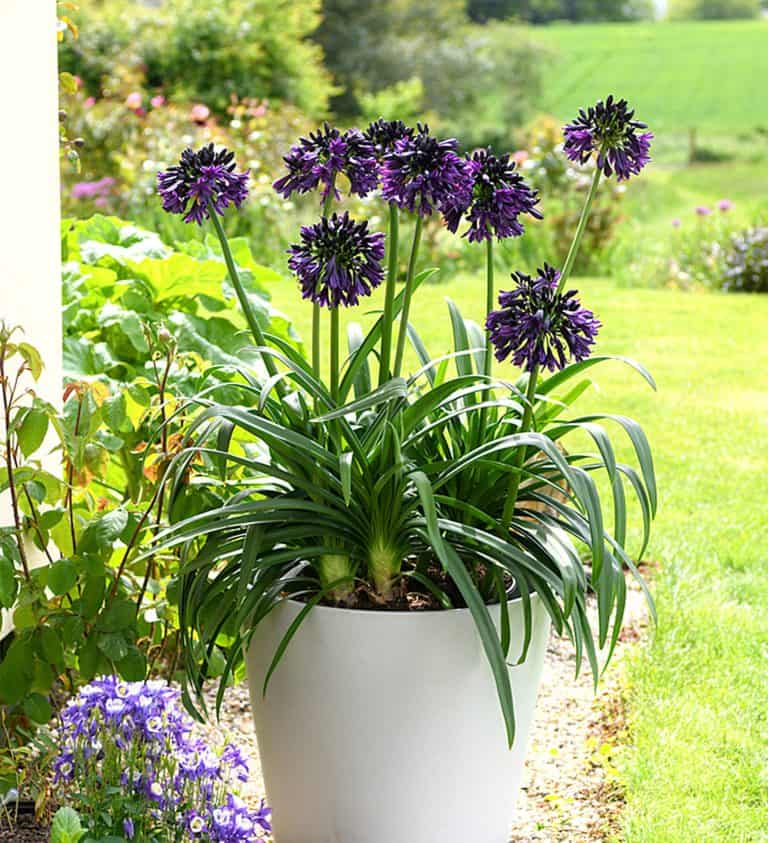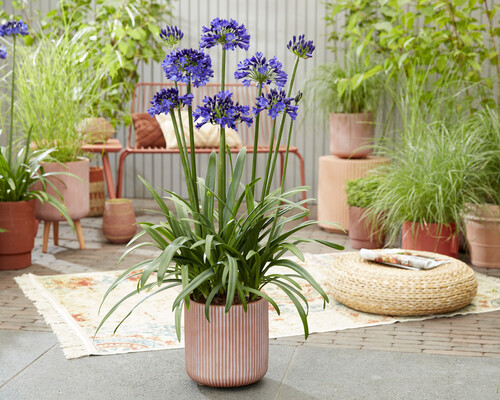Agapanthus Proliferation: Tips for Expanding Your Plant Collection
Agapanthus Proliferation: Tips for Expanding Your Plant Collection
Blog Article
Letting Loose the Secret to Successful Agapanthus Farming: Idea for a Flourishing Garden
In the world of gardening, growing agapanthus successfully calls for a tactical strategy that includes different facets of plant treatment. With careful interest to information, one can unlock the secrets to supporting these magnificent blossoms, causing a garden that grows with beauty and vibrancy. By comprehending the nuances of agapanthus farming, one can produce a setting where these plants grow and grow generously. In the adhering to discussion, we will check out necessary pointers and tricks that will lead you towards a flourishing agapanthus yard, offering insights right into ideal techniques, soil problems, watering methods, and extra.
Planting Agapanthus: Ideal Practices
When planting Agapanthus, appropriate soil prep work is important for making sure successful growth and advancement of these beautiful blossoms. Agapanthus, generally called Lily of the Nile or African lily, thrives in well-draining soil with a somewhat acidic to neutral pH level - Agapanthus. Before planting, it is essential to modify hefty clay dirts with raw material such as compost or peat moss to improve water drainage and give crucial nutrients for the plants
To grow Agapanthus, pick an area that receives full sunshine to partial shade, as this will certainly advertise healthy and balanced development and bountiful blooming. Dig a hole twice the diameter of the plant's origin sphere and put the Agapanthus at the exact same depth it was formerly growing. Carefully backfill the opening with soil, pressing down securely to remove any kind of air pockets around the origins.
Water the newly planted Agapanthus thoroughly and proceed to keep the soil evenly moist, specifically throughout the plant's energetic growing period. Agapanthus. Applying a well balanced plant food once a month can better sustain the plant's growth and flowering. By adhering to these finest methods for planting Agapanthus, you can create a magnificent display screen of these exciting flowers in your garden
Perfect Dirt Conditions for Agapanthus
For optimum development and flowering success of Agapanthus plants, making sure the soil conditions are suitable is essential. Agapanthus favors soil that is abundant in nutrients, so incorporating a well balanced plant food during the growing period can promote healthy development and dynamic flowers.

Watering and Fertilizing Tips
To make sure healthy growth and vibrant blooms, correct watering and feeding strategies are necessary for effective Agapanthus growing. Agapanthus plants benefit from regular watering, specifically throughout the growing season.
When it comes to feeding Agapanthus, a well balanced fertilizer with equal components nitrogen, phosphorus, and potassium can be used in the spring to promote healthy and balanced development and flowering. Slow-release plant foods are excellent for offering nutrients gradually over an extensive period. Stay clear of over-fertilizing, as this can result in too much foliage development at the cost of blooms.
In addition, integrating raw material like compost into the soil can boost nutrient degrees and enhance soil framework, aiding in the total health of the Agapanthus plants. By adhering to these watering and feeding ideas, gardeners can guarantee their Agapanthus plants flourish and produce sensational displays of blossoms.
Pruning and Deadheading Strategies
Appropriate trimming and deadheading methods play an essential duty in preserving the wellness and looks of Agapanthus plants, complementing the crucial methods of watering and feeding for successful growing. Trimming Agapanthus entails removing spent blossom heads, yellowing or dead leaves, and total shaping of the plant to promote much better development. Deadheading, the procedure of getting rid of faded flowers, not just boosts the plant's appearance but likewise motivates click over here additional growing.
When deadheading Agapanthus, it is a good idea to trim off the blossom stem at the base using sharp, clean shears. This process redirects the plant's power from seed manufacturing back right into root and foliage development, advertising a healthier and much more robust plant. Regular deadheading can prolong the flowering period of Agapanthus and stop self-seeding, which can bring about congestion.
In terms of pruning, Agapanthus usually benefits from a light trim after blooming to clean up the plant and motivate fresh growth. Cutting down the spent flower stems and getting rid of any broken or dead vegetation helps maintain the plant's vigor and general look. Nonetheless, it is important to prevent reducing right into the crown of the plant, as this can damage its health.

Protecting Agapanthus From Vermins and Diseases
Implementing reliable bug and illness management strategies is crucial to guarding the wellness and vitality of Agapanthus plants in cultivation. One usual bug that impacts Agapanthus is the Agapanthus borer, a caterpillar that passages into the plant, causing damage to the leaves and flowers.
Along with pests, Agapanthus are prone to diseases such as origin rot and fungal leaf spots. These issues can commonly be prevented by ensuring appropriate drainage and directory preventing overwatering. If indicators of disease appear, affected parts of the plant need to be without delay eliminated to avoid additional spread. Fungicides might likewise be utilized as a treatment step, adhering to the manufacturer's guidelines meticulously. By staying attentive and addressing parasite and illness problems without delay, garden enthusiasts can assist their Agapanthus grow and thrive.

Verdict
Finally, effective farming of agapanthus requires correct growing strategies, optimal soil problems, appropriate watering and fertilizing, normal trimming and deadheading, and defense from bugs and diseases. By adhering to these ideas and techniques, gardeners can ensure a growing yard loaded with stunning agapanthus blooms. Agapanthus. Bear in mind to keep consistent treatment and attention to information to advertise the wellness and longevity of these sensational plants
When planting Agapanthus, correct dirt prep work is essential for making certain effective development and development of these stunning blossoms.Water the newly grown Agapanthus completely and continue to keep the dirt equally wet, especially throughout the plant's energetic growing season.For optimum development and blooming success of Agapanthus plants, making certain the dirt problems are ideal is critical. When hair transplanting or growing Agapanthus, ensure the soil is well-prepared to supply the essential foundation for the plants to establish themselves effectively. One usual insect that affects Agapanthus is the i thought about this Agapanthus borer, a caterpillar that passages into the plant, causing damages to the leaves and blossoms.
Report this page